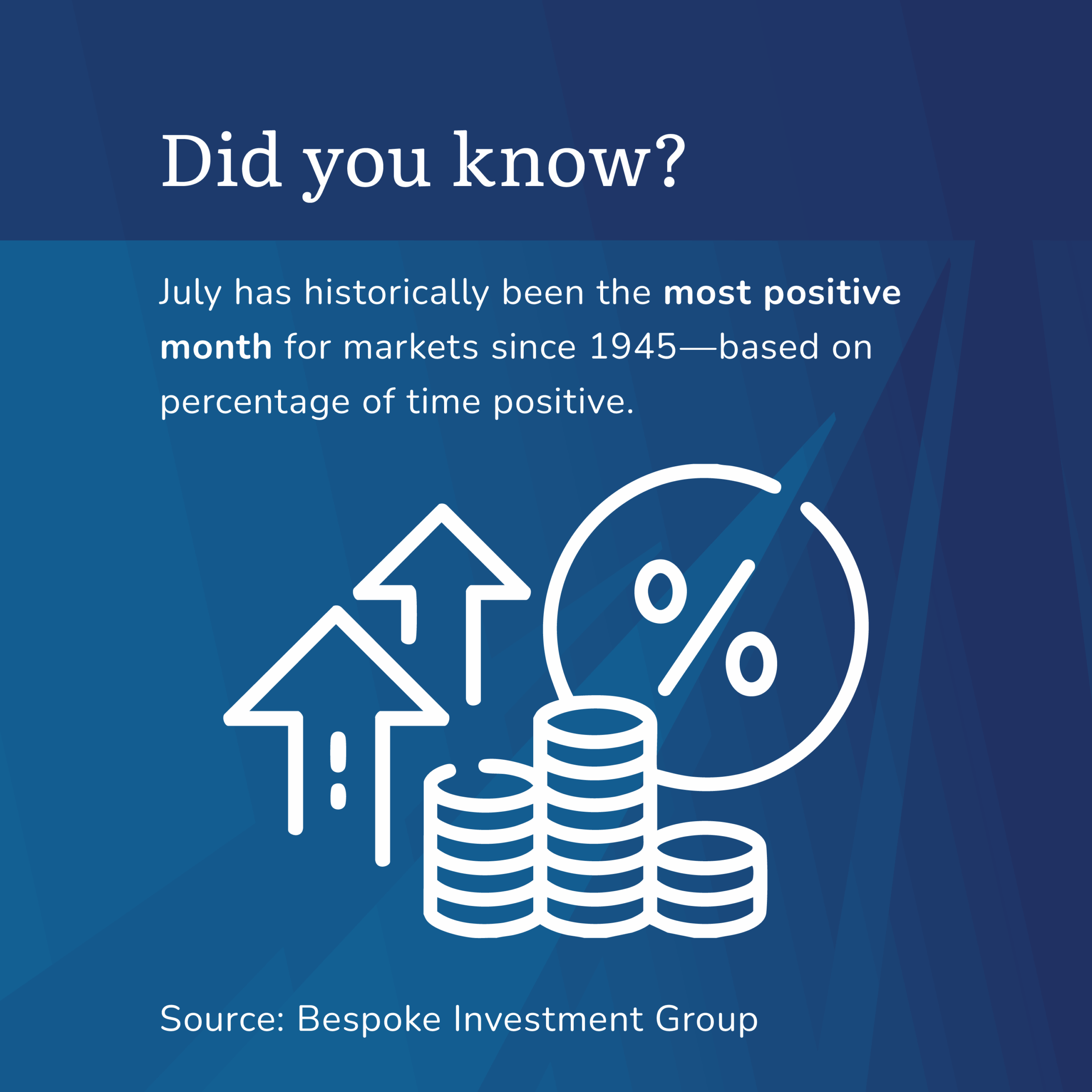Risk Tolerance: What Is It? Why Is It Important?
When I think of risk and the markets, I’m reminded of one of my favorite Mark Twain quotes: “October: This is one of the peculiarly dangerous months to speculate in stocks. The others are July, January, September, April, November, May, March, June, December, August, and February.”
Although I can’t help but laugh, I don’t doubt that some people feel this way about investing. It’s easy to think of the market as highly speculative when recalling the turmoil of the dot-com bubble in 2001, the subprime housing crisis of 2007-2009, and the recent volatility last year with COVID-19. Pile on the round-the-clock media coverage of the market’s every move that at times stokes feelings of apprehension, and suddenly the thought of risk and investing can be frightening. Fear of risk even seems reasonable. On the contrary, that fear is dangerous as it can prevent you from investing in the manner needed to achieve your goals. Said differently, a proper understanding of risk and, more importantly, knowing your risk tolerance is essential to achieving your goals.
Risk Tolerance vs. Risk Capacity
To understand risk tolerance, we first need to distinguish it from risk capacity. Risk tolerance can be thought of as your willingness to take risks. It’s your attitudes and beliefs. Risk capacity, on the other hand, is the ability to take risks or withstand losses. It’s your resources relative to your goals.
“… tolerance relates to an individual’s emotional limit of acceptable risk; capacity refers to the financial capacity to withstand market losses. These two factors are not necessarily correlated. For example, it is not uncommon to find an investor with significant assets and modest demands on those assets such that a significant market loss would not affect the ability to maintain the individual’s desired quality of life (i.e., high-risk capacity). However, that same investor might be unwilling to invest any significant portion of the portfolio in stock and might well bail out of whatever stock allocation there was in a significant bear market (i.e., low-risk tolerance). As a consequence, questions regarding capacity are more important for general planning purposes but are not relevant for evaluating tolerance.” (1)
When markets are doing well, risk is irrelevant and risk tolerance is infinite. It’s only when the market is falling that risk becomes important. Investors too often make the mistake of panicking in a bear market and selling their investments at depressed prices. They effectively buy high and sell low, locking in losses that can be irreversibly damaging to their goals. For that reason, we believe the most practical definition of risk tolerance to be the moment right before you call us and say, “I can’t stand it anymore; sell me out.”
How do we evaluate risk tolerance?
While we use a well-known and widely-used traditional risk survey, FinaMetrica, most of our evaluation is done through conversations with you and our Risk Tolerance Questionnaire (RTQ). Although the RTQ is a formal questionnaire that can be completed individually, we work through it with clients and use it as an educational tool to facilitate discussion about how each of us thinks about risk and investing.
Our entire process is grounded in the idea that each of our clients has a unique perspective on risk. To understand these perspectives, we use the insights into behavioral finance to provide explanations for why people make the decisions that they do.
“People are strange. There is no more apparent example than the psychology of risk. People in general and clients, in particular, have difficulty distinguishing between knowledge-based risk and foolhardy speculation. As an example, investors grossly overestimate their knowledge and, even when provided with good data, they are poor mathematicians of probability.
Investors also have difficulty estimating the risk of future events. They are much more comfortable with short-term events in which they have more intuitive confidence in their knowledge. This results in a tendency to overstate their personal risk-taking propensity.” (2)
Behavioral finance recognizes that we have limitations in processing large amounts of information, thus impacting our decision-making. To overcome these limitations, we use heuristics to simplify decisions. Heuristics are mental shortcuts, also known as rules of thumb, based on our experiences. They’re helpful in making quick and adequate decisions but can also lead to biases that result in harmful decisions when used inappropriately.
“By understanding the nature of heuristics, [we are] able to better understand the underlying issues influencing a client’s risk tolerance. Also, [we are] more effective in assisting [our clients} to modify misleading heuristics, as well as becoming a better educator and guide [for] our clients in the useful application of these mental shortcuts.” (3)
A common heuristic that creates a harmful perspective about risk is availability bias. This mental shortcut uses recent and easily recalled information to draw conclusions. A classic example of this bias is an individual who is fearful of risk because he or she easily remembers markets falling last year with the onset of COVID-19, and is engulfed in the round-the-clock media coverage of the market’s day-to-day movements. By addressing this bias and any others that may be harmful, we help our clients form reasonable perceptions of risk. Finally, with a common understanding of risk, we can then properly evaluate risk tolerance and invest in a manner in which our clients are most likely to remain committed.
Identifying and working through the flaws in our thinking helps us avoid common traps that create harmful or unrealistic expectations that stop us from achieving our goals.
Connect with an advisor today to learn more about your risk tolerance.
Sources
- Evensky, Harold, Stephen M. Horan, and Thomas R. Robinson. The New Wealth Management: The Financial Advisor’s Guide to Managing and Investing Client Assets. Hoboken, NJ: J. Wiley, 2011. 57.
- Evensky, Harold, Stephen M. Horan, and Thomas R. Robinson. The New Wealth Management: The Financial Advisor’s Guide to Managing and Investing Client Assets. Hoboken, NJ: J. Wiley, 2011. 59.
- Evensky, Harold, Stephen M. Horan, and Thomas R. Robinson. The New Wealth Management: The Financial Advisor’s Guide to Managing and Investing Client Assets. Hoboken, NJ: J. Wiley, 2011. 59.
Categories
Recent Insights
-

Talk Your Chart | From Saunas to Stock Surges: Market Recoveries, Margin Resilience & Rate Watch | Episode 69
In Episode 69 of Talk Your Chart, Brett and Marcos unpack the surprising speed of the recent market recovery, debate the timing vs. time-in-market mindset, explore political biases in investing, and analyze how corporate margins and U.S. debt are shaping investor decisions in 2025. Charts available for download here.
-

Smart Money Moves for Teens: The Best Financial Literacy Apps
Why Financial Literacy for Teens Matters Let’s face it—teaching teens about money can be tricky. But thanks to an ever-growing list of financial literacy apps, it’s never been easier (or more engaging) to help kids build healthy money habits. I recently spoke with two clients who’ve been using the Greenlight app to help their children…
-

Rebuilding Financial Confidence After Divorce: Managing Risk & Moving Forward
Divorce is not just an emotional transition—it’s a financial one, too. The process of separating assets, redefining financial goals, and adjusting to a new financial reality can feel overwhelming. But with the right mindset and strategies, you can regain control and build a future that aligns with your new chapter in life. Understanding Financial Risk…
-

Giving with Pride: Smart Strategies for LGBTQIA+ Donors
Understanding the Landscape of LGBTQIA+ Philanthropy LGBTQIA+ donors are uniquely positioned to drive meaningful change, but the philanthropic landscape remains complex and underfunded. Historically, LGBTQIA+ organizations have faced significant challenges in securing resources, often competing with larger, more established nonprofits for limited funding. This disparity highlights the importance of strategic giving to ensure that your…
-

How to Build Lasting Relationships that Propel Your Business and Elevate Your Community
As business leaders, our role in the community extends beyond charitable acts—it’s a strategic initiative that strengthens both our businesses and the communities we serve. Building meaningful community partnerships is not just about doing good; it’s about doing it strategically to foster deeper relationships, enhance your brand, and make a lasting difference. But where do…
